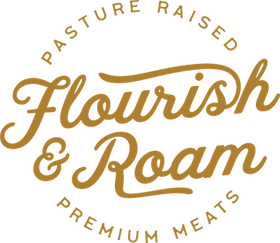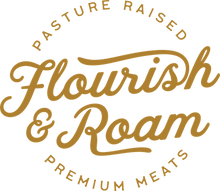As a dairy farmer with a PhD in food safety, I use to believe: raw milk could never be safe.
That belief was rooted in years of academic training, backed by published risk assessments and reinforced by foodborne illness outbreak data. But like many things in life, perspective shifts when your boots hit the ground, your hands are in the work, and your family drinks the same milk your customers do.
The Recent Change in Ohio: Pet Milk and Dye
In May 2025, the Ohio Department of Agriculture issued a statement requiring that raw milk sold as "pet milk" be dyed with a food-safe FDA-approved dye. While the intent is to distinguish it from Grade A pasteurized milk, the effect is disruptive to dairy farmers who rely on this loophole to offer raw milk without operating as a formal herdshare. For those of us committed to transparency and safety, this change highlights a deeper question: What does true raw milk safety actually look like?
When Legalization Comes With Limits
Advocates for raw milk often point to states where sales are permitted as examples of what should be. But those same states also carry cautionary tales:
-
Oregon: Raw milk is legal, but it is illegal to advertise it. A simple sign reading "We sell raw milk" can carry penalties of up to one year in prison or $6,000 in fines. [1]
-
Washington State: Small-scale producers with no license can sell raw milk on-farm if they have fewer than two cows (or nine goats or sheep) and limit sales to 120 gallons per month. To sell raw milk at retail, a producer must obtain both a Milk Producer License and a Milk Processing Plant License. [2]
So while legal, these models come with tight regulations, logistical red tape, and in some cases, legal risk for farmers trying to do right by their customers.
Why We Choose the Herdshare Model
At Pure Moo Dairy (yes, we created a completely separate business for our raw milk for legal and liability protection), we operate under a herdshare agreement—not as a loophole, but as a deliberate choice. This model allows individuals to become partial owners of the herd and receive raw milk as a benefit of ownership. It strengthens the relationship between farmer and family, encourages education, and builds mutual trust.
My Professional Concern as a Food Safety Expert
Here's where I put on my PhD hat. I would never consume raw milk from a dairy where producing milk for human raw milk consumption is not the first priority. Most dairies produce milk that is intended for pasteurization, not for direct human consumption. That’s a key distinction.
This isn’t to say milk from a commercial dairy is inherently unsafe—many are incredibly diligent. But when the goal is volume and pasteurization is the final kill step, the systems of detection and sanitation differ dramatically.
What We Do Differently
At Pure Moo Dairy, we follow and exceed the testing protocols outlined by the Raw Milk Institute (RAWMI). Unlike large-scale dairies where milk is pooled into chill tanks ranging from 300 to 5,000+ gallons, our 30-gallon chill tank is sampled daily. This allows for a far more accurate representation of what is or isn’t in our milk. We perform pathogen testing, plate counts, and more, going well beyond minimum legal requirements.
Smaller scale means tighter control. It means our equipment is smaller, we change hoses and milk contact equipment more ofter, we know our animals by name, and every part of the process—from milking to bottling—is monitored for cleanliness, temperature control, and overall quality.
Raw Milk Isn't Automatically Safe. It's Made Safe.
Safety is never a guarantee—it’s a result of intentional systems, rigorous testing, and a commitment to improvement. The romantic idea that "all raw milk is better" can be dangerous. But the blanket statement that "raw milk can never be safe" is also flawed. The truth lives in the nuance.
As discussions around raw milk laws continue to grow louder across the country, it’s important that we, as both farmers and consumers, pause to consider the full implications. Legalization without strong standards can introduce real risk. While access is a worthy goal, the foundation must be built on education, proper systems, and accountability.
Not all raw milk is created equal—and it’s vital that those who produce and consume it understand what goes into making it safe. For us, that means small batch sizes, aggressive testing, and a genuine commitment to the people we serve.
We aren’t here to push legislation. We’re here to be part of a thoughtful, informed conversation that prioritizes both freedom and responsibility.
Sources:
[1] Oregon Revised Statutes, ORS 621.012 and related sections
[2] Washington State Department of Agriculture, Milk Producer and Milk Processing Plant Licensing Requirements
Real Raw Milk Facts: https://www.realrawmilkfacts.com/raw-milk-regulations
By Dr. Sarah Ison, PhD
Co-Owner, Flourish & Roam
Animal Scientist & Pre-Harvest Food Safety Specialist



Leave a comment